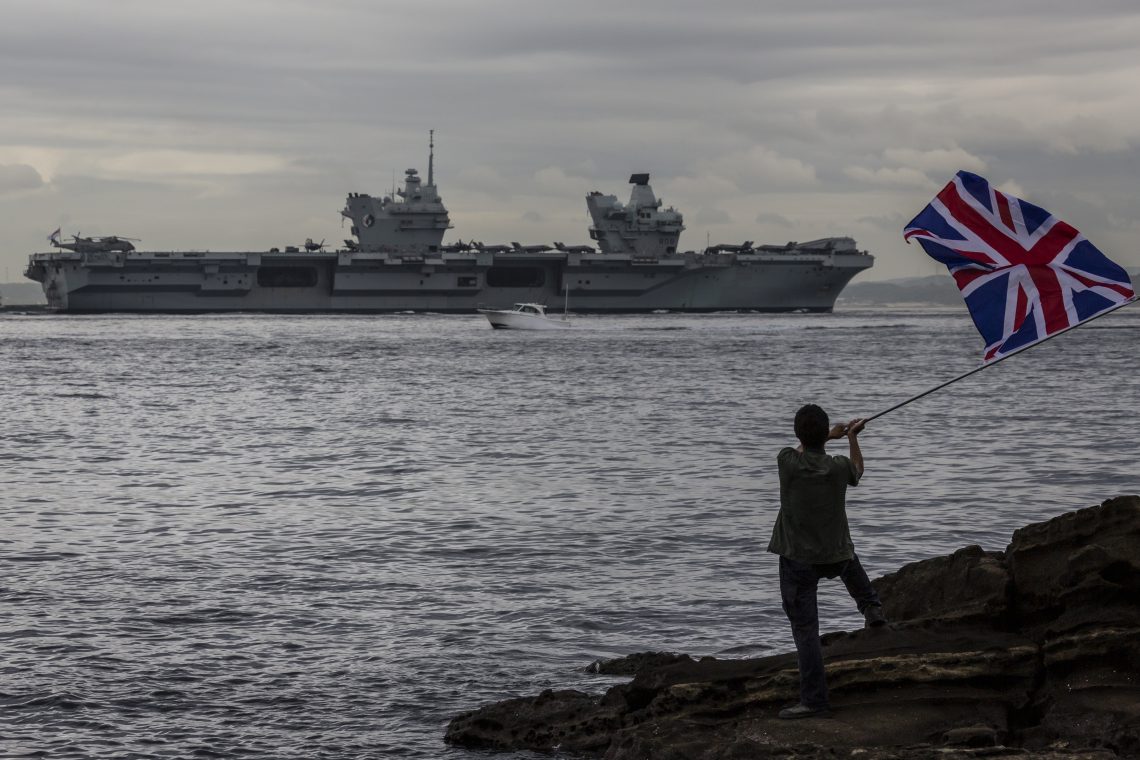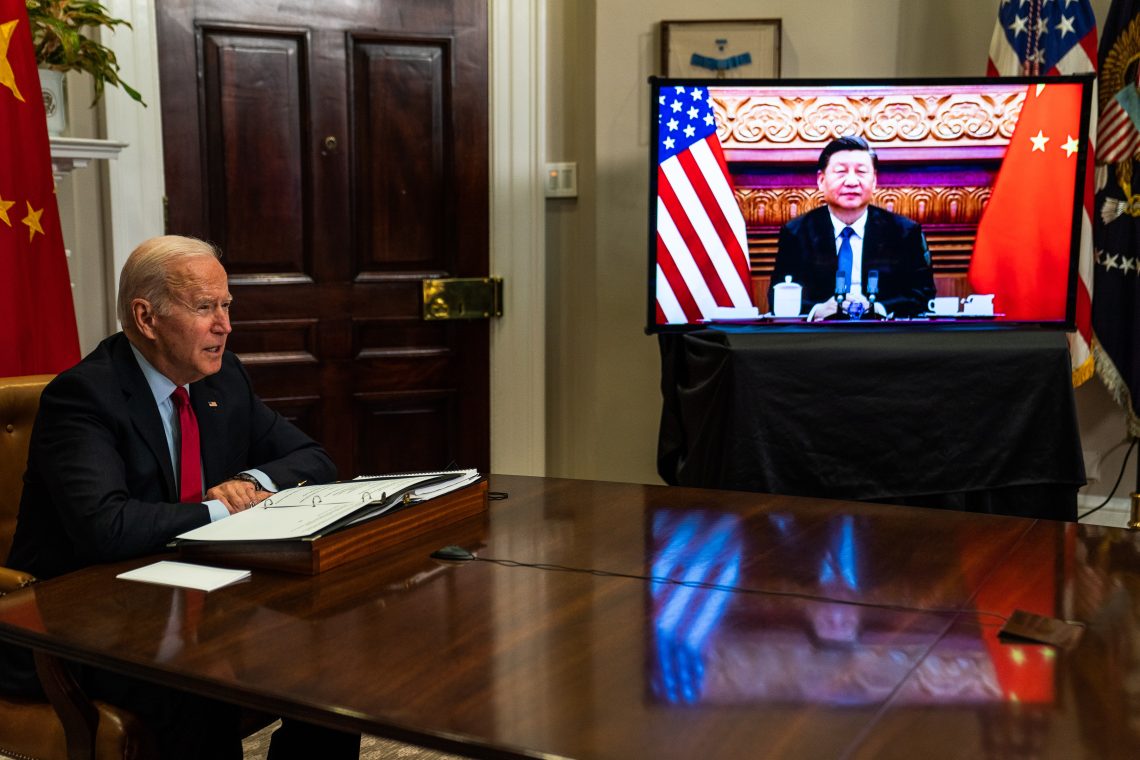U.S., UK try to synchronize China, Indo-Pacific policy
While the allies view China as a security threat, London is more committed to a liberal trade policy. Still, the United States and the United Kingdom mostly agree on Indo-Pacific policy.

In a nutshell
- The UK will likely follow the U.S. lead, with slight variations, on Indo-Pacific policy
- China-U.S. trade flourishes despite Washington’s tough rhetoric on curbing Beijing
- Greater military cooperation and trade with India, Japan and Australia are priorities
In March 2022, delegations from the United States and the United Kingdom met in London for strategic talks on the Indo-Pacific. The outcome constituted affirmation of the UK’s “tilt” to the region that it announced in the 2021 comprehensive review of its global strategy. Considering that the UK considers its bilateral relationship with the U.S. to be its most important one, the talks on the Indo-Pacific serve as a useful point of departure for assessing the UK’s approach to the region.
Tilt vs. strategy
Among other things, the joint statement on the March consultations emphasizes the synergy between U.S. President Joe Biden’s Indo-Pacific Strategy (IPS) and the Indo-Pacific tilt of caretaker Prime Minister Boris Johnson, who resigned on July 7.
There are, indeed, synergies between the two nations’ strategies. They both recognize the shift in global power to the Indo-Pacific and, within that shift, the central role of China. Both countries see China as a threat to the international system as well as a direct security risk to their interests in the region. The UK’s review calls it a “systemic competitor.”
The UK’s approach to trade also contains the seeds for differences with the U.S. in China policy.
The UK, however, departs from the U.S. in the way it discusses the economy. Its strategy’s explicit commitment to free trade is striking. The U.S., both in the IPS and in the subsequent Indo-Pacific Economic Framework that the IPS references, is in search of new approaches. In a departure from the last 20 years of U.S. leadership on trade, the last two administrations have actively downplayed the value of what the British summarize as the “free flow of trade, capital, data, innovation and ideas.”
Furthermore, for the British, this interest in economic freedom extends to the pursuit of a “positive trade and investment relationship” with China. There is no similar characterization of economic ties with China in the American document.
This is more than academic. These assumptions are playing out in the policy choices the two countries are making.
Common cause
The tension in U.S.-China relations is an inescapable feature of the Indo-Pacific security environment, spanning issues from Taiwan to the Pacific Islands to China’s nuclear weapons capabilities. The U.S. is seeking to manage the range of Chinese challenges mostly through intensifying diplomatic coordination with allies and partners, but also through the presence of its forward-deployed military. In this regard, the U.S. has been particularly active and direct in expressing and rallying support for Taiwan, as well as providing it arms.
The UK has also been stepping up engagements across the region. Japan is central to this strategy. In August and September of last year, the UK deployed its new HMS Queen Elizabeth Strike Group to Japan where it drilled with Japanese, U.S., and Dutch navies and docked at the U.S. naval base in Yokosuka – in what the operation’s commander called a “signal” of the UK’s new commitment to the region. The UK and Japan already have a Defense Logistics Treaty from 2017 to assist military-to-military cooperation and in May 2022 reached an agreement in principle on a reciprocal military access agreement.

Building on this basis, the UK has expressed the intention to permanently deploy a new frigate to the region in the 2025 time frame – very likely with the U.S. Navy in Japan. This would supplement two offshore patrol vessels the UK has deployed to the region for an initial period of five years. These two ships are small and on rotation, but with missions like delivering emergency aid to Tonga after its January 2022 tsunami, they demonstrate a permanent interest in the region. All of this comes on top of long-standing British assets in the region, most notably its small naval presence in Singapore, its jungle warfare school and garrison in Brunei and its association with the Five Power Defense Arrangement.
Next in line of priority for the British is India. The UK’s shared interest there with the U.S. has been much noted in the Indian press. And the British have been quite active, as demonstrated by the agreement with India to pursue a “comprehensive strategic partnership,” the visit to India of the same carrier strike group that drilled in Japan and the first tri-service joint exercise between the two militaries. Australia is also critical to the UK’s regional strategy. Its centerpiece is the Australia-UK-U.S. Partnership (AUKUS).
Economic divergence
The Biden administration’s 13-nation Indo-Pacific Economic Framework seeks to address a range of concerns, including supply chain security, clean energy and digital standards – but not in the traditional areas of market access for trade and investment.
The UK’s tilt, meanwhile, puts trade at the heart of its strategy. Since leaving the European Union, the UK has sealed new free trade agreements with Australia and New Zealand. It is in negotiations to join the 11-nation Comprehensive and Progressive Agreement for Transpacific Partnership (CPTPP) and in separate trade talks with India. It also has a new free trade agreement with Japan since the end of 2020.
How the UK’s policy in the Indo-Pacific evolves, however, depends significantly on the direction of U.S. policy.
The UK’s approach to trade also contains the seeds for differences in China policy. U.S. policy on China is dominated by a concern for threats, including economic issues. There is a consensus in Washington around the need to protect supply chains from China or to restrict economic engagement for other reasons, including human rights, violation of international trade rules, infrastructure security and geostrategy. The rhetoric conflicts with the reality of aggregate trade and investment flow between the U.S. and China, which continue to be strong. But the preferred direction of policymakers is generally uncontested. They are preferences – hawkish, and in the direction of decoupling – that will, therefore, continue to drive the discussion.
The UK’s approach has more room for maneuver. The tilt’s positive reference to UK-China economic ties was reflected in media reports late last year that Beijing and London had agreed to restart the UK-China Economic and Financial Dialogue, and a similar report involving the revival of the Joint Economic and Trade Committee. Both sets of talks had ground to a halt a couple of years ago over differences over the political situation in Hong Kong. This contradiction at the heart of the UK’s approach to China has also been on display in the debates over the Chinese attempt to acquire British semiconductor company Newport Wafer Fab, which was initially greenlighted by the Johnson government. A similar dynamic is on display over the Chinese stake in the Sizewell nuclear power project. Prime Minister Boris Johnson himself, who has well-known family connections to China, had famously declared himself a “Sinophile” determined to overcome obstacles in the UK-China relationship.
There are few closer relationships in the world than between the U.S. and the UK. Their capitals work together to develop understandings of their shared interests. Their political classes interact closely; their policy communities have access to one another’s policy debates unfettered by language differences. How the UK’s policy in the Indo-Pacific evolves, however, depends significantly on the direction of U.S. policy. The UK’s China policy can go in one of two directions.
Scenarios
Most likely
The most likely scenario involves a continuing tight focus from Washington on security issues, including vis-a-vis China, and retrenchment on economic policy.
Based on its own assessment of Chinese power in particular, the UK has decided to deepen engagement in the region on political and security issues. Continued U.S.-China tensions put a premium on these efforts. The U.S. will encourage London to do more. It will welcome ever-tighter integration both at the strategic and tactical level – up to and including wartime contingency planning. A good indicator here would be for the UK to follow through by permanently basing a frigate in the region and the near-term deployment of its second new carrier, the Prince of Wales.
The AUKUS Partnership will continue apace toward the goal of fielding new nuclear-powered submarines for Australia in 15 to 20 years, as well as jointly developing other weapons technology, including in artificial intelligence, cyber and hypersonics. The UK’s security relationship with Japan will also continue to grow, as will the frequency of UK naval deployments to the Indo-Pacific. These developments will enhance trilateral military-to-military cooperation among the U.S., Japan and the UK, and extend further to India and other regional players, and other forums, including the Quad.
In this scenario, the U.S. counsels caution in the UK’s economic relationship with China, potentially leading to some tension in U.S.-UK relations. As happened with Huawei, where cooperation with theTrump administration resulted in a UK decision to remove all Huawei equipment from its 5G network, the UK will block the sale of Newport Wafer Fab to the Chinese and the Chinese stake in Sizewell. This reflects a broader sense of suspicion over Chinese investment that will continue with other projects. In this context, formal economic dialogue between the UK and China will remain tightly constrained, if not frozen altogether. Despite American retrenchment, the UK’s economic engagement in the rest of the region continues and gains greater urgency considering its poor relationship with China. At the extreme, energetic UK economic engagement leads the U.S. to reconsider its own turn inward on trade.
The UK has its own motivation on the issue of Hong Kong, where it has led the world in the provision of a haven for HongKongers fleeing the mainland’s political crackdown. This will be supplemented by further cooperation with the U.S. on other human rights concerns, including the plight of China’s Uighur minority. All of this will keep UK-China relations in very difficult straits.
Least likely
The least likely prospect keys off a U.S.-China rapprochement. All signs point to a continued, relatively hardline American approach to China – even more so if Republicans retake Congress in 2022 and the presidency in 2024. There is, however, an outside chance that the situation improves in Beijing sufficiently to justify a more constructive U.S. approach to its relationship.
In this case, the UK continues its strategic focus on the region and its diplomatic and trade outreach. It reaches trade agreements on a pace similar to the first scenario. Priority is taken off naval deployments and other demonstrations of tactical cooperation with the U.S. This eases the UK’s relationship with China, and it opens the way for the resumption of formal economic talks and, at the outside, formal agreements. At a practical level, this creates a new context for Chinese investments, which becomes less sensitive. The talks and individual investment controversies, and American reaction to them, are signals to watch for that U.S. pressure may be easing.
Even in this more hopeful scenario, Hong Kong remains a sticking point in the UK-China relationship. Strong backbench and opposition undercurrents continue to press on points of conflict with China, but a more conciliatory view in the U.S. will blunt concern in the UK over the broader strategic challenge posed by China.








